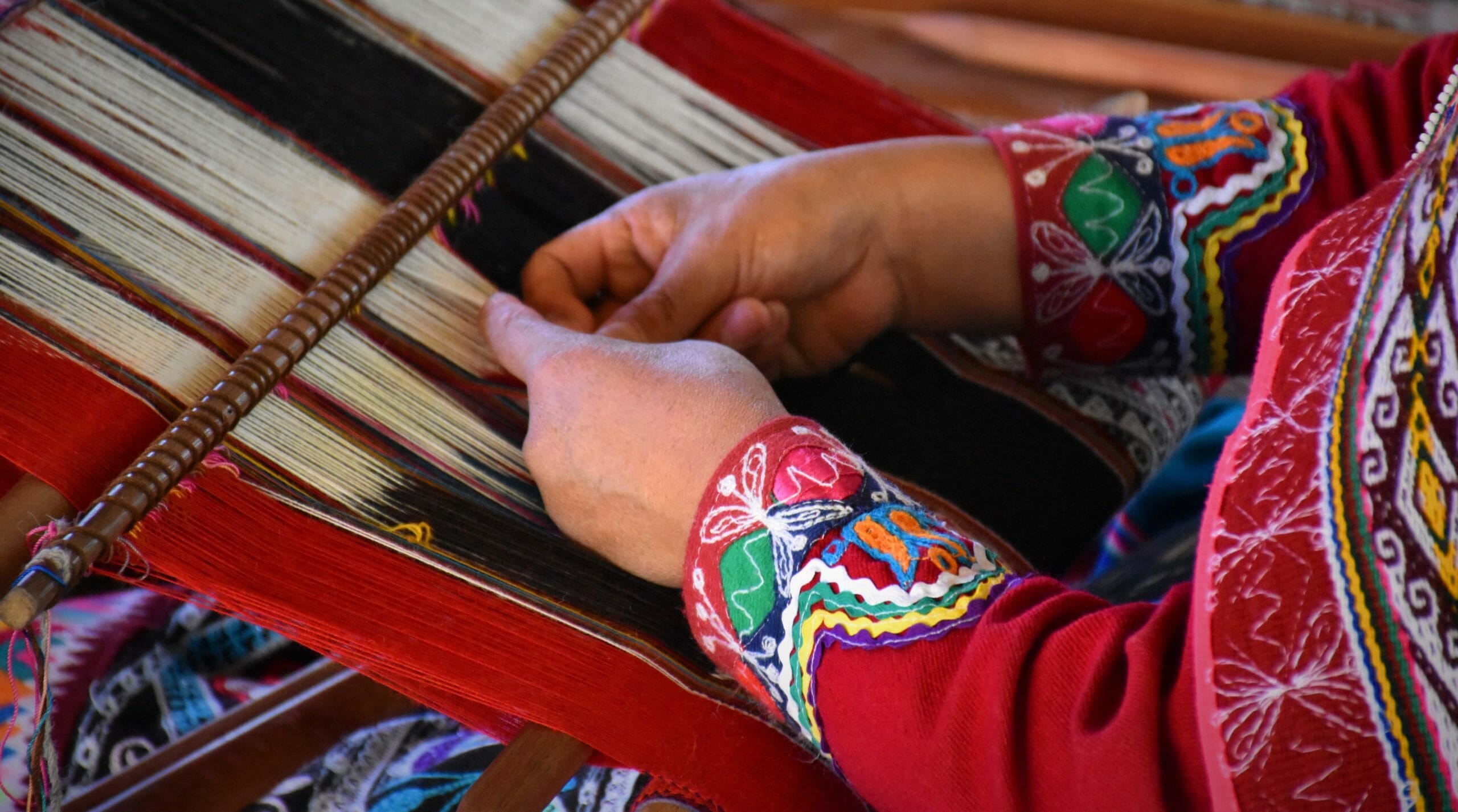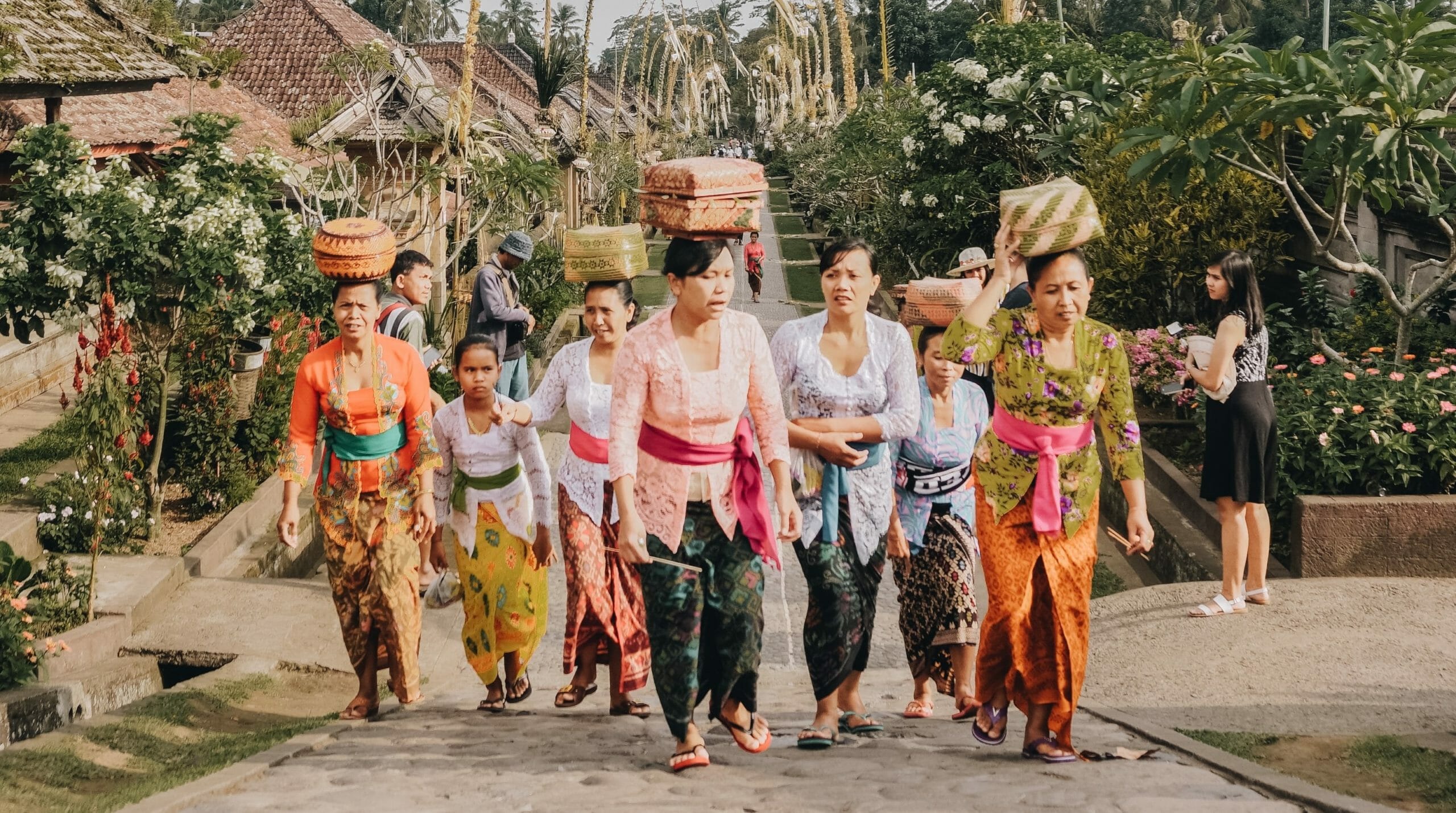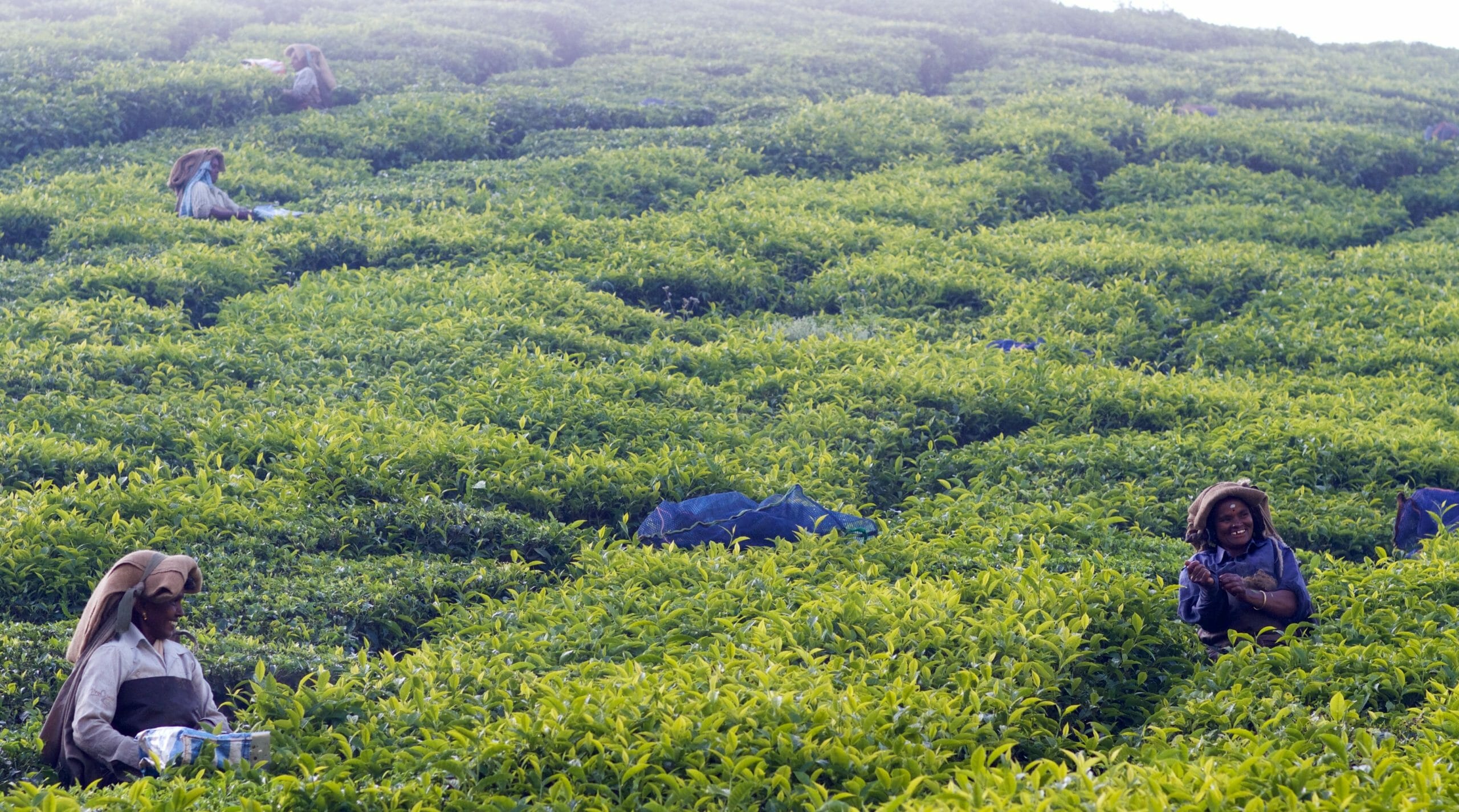This page offers information on how to implement private sector development (PSD) programmes in gender-sensitive ways and promote Women’s Economic Empowerment (WEE) – now recognised as one of the major driving forces of global economic growth and well-being.
For an interactive, digestible introduction to WEE concepts and for tips on implementation, check out the new WEE Gateway, produced by the DCED WEE Working Group. The WEE Gateway includes video content, case studies, downloadable infographics and resources that you may find useful for sharing with colleagues.
Our WEE Webinar Library brings together top webinars on a wide variety of WEE topics into a complementary video learning hub. The DCED WEE WG podcast, WEE Talks, also explores a variety of WEE-related topics, in bite-sized format.
For more specific resources on the gender implications of the COVID-19 pandemic, please refer to the DCED knowledge page on Socioeconomic impacts and national responses. For resources and advice on tackling growing gender inequality in the context of COVID-19, please refer to the DCED knowledge page on Promoting economic recovery and resilience.
Watch the videos below for a short introduction to the concept of WEE, and for an introduction to this knowledge page where we highlight how to navigate the page, and summarize key points from some of the most recent and relevant publications that you can find here.
A Synthesis Note that defines WEE and outlines its constraints and opportunities.
Research and Evidence Update on WEE, 2019
This update brings together key findings from recent original studies on constraints and solutions to WEE, as well as the social and economic benefits of WEE.
Donor Responses for Promoting WEE During COVID-19, 2021
This policy brief outlines how DCED members should adjust their programmes to ensure that WEE is supported throughout the COVID-19 pandemic.
This section provides access to the DCED’s key documents on women’s economic empowerment, produced by various DCED Working Groups. Read more about the Women’s Economic Empowerment Working Group.
General guidance
- How to Integrate Gender and Women’s Economic Empowerment into PSD Programmes, DCED, 2017
- Measuring Women’s Economic Empowerment in PSD: Guidelines for Practitioners, DCED, 2014
Case studies
Specific applications of gender-sensitive programming
- With an ID in Hand, Women Have More Economic Opportunities, DCED, 2023, and corresponding policy brief.
- Childcare Solutions for Women Micro and Small Enterprises, DCED, 2022
- Donor Engagement in Gender-lens Investing: Approaches and opportunities, DCED, 2022
- Gender-Responsive Green Growth Guidance Sheets, DCED, 2019
- On the Move: Women’s Economic Empowerment in Contexts of Migration and Forced Displacement, DCED, 2019
- Gender-Sensitive Business Environment Reform: Why does it matter? – A policy guide, DCED, 2017
- Business Environment Reform and Gender, Technical paper, DCED, 2016
- How to put Gender and WEE into practice in M4P, Helen Bradbury, DCED, 2016

The economic and business case for WEE
- Case Study – Strategic Inclusion: Grean World’s financial returns of targeting women in the last mile, USAID Feed the Future, 2024
- The Global Gender Gap Report 2023, World Economic Forum, 2023
- A Briefer: Gender Inequality Causes Poverty, USAID, 2021
- Key Facts in Women’s Economic Empowerment, WOW, 2019
- Working with the Private Sector to Empower Women: What to Measure and How to Build the Business Case for Change, AWEF, 2019
- Gender Equality Mainstreaming for Business Growth and Impact: A Step-by-Step Manual for Investors and Capacity Builders, MEDA/USAID, 2018
- Investing in women: new evidence for the business case, IFC, 2017
- Women’s Economic Empowerment in Sub-Saharan Africa – Recommendations for Business Action, BSR, 2017
- The Win-Win Case for Women’s Economic Empowerment and Growth: Review of the Literature, GrOW Research Series, 2017
Sector- and country-specific constraints and opportunities
- The Benefits of Investing in Transformative Childcare Policy Packages Towards Gender Equality and Social Justice, ILO, 2023.
- Investments in Childcare for Gender Equality in Asia and the Pacific, ILO, 2023
- Case Study: How financial services providers can benefit by serving low income women better and increase women’s economic empowerment, WIN Mozambique (TechnoServe, 2023
- Mapping the Intersection of Women’s Economic Empowerment Work and Clean Energy, IDRC, 2022
- Care at Work: Investing in care leave and services for a more gender equal world of work, ILO, 2022 (executive summary also available)
- USAID Women’s Economic Empowerment and Equality (W3) Dashboard, 2018: Interactive tool compiling country-specific data on women’s economic, social, and political inclusion
- Women’s pathways to the digital sector: Stories of Challenges and Opportunities, BMZ, 2017
- Gender analysis of labour market outcomes in Sub-Saharan Africa: Recent Evidence from Cameroon and Mali, UN Women, 2017
- Gender Roles and Opportunities for Women in Urban Environments, GSDRC, 2016
General ‘how to’ guidance
- Transforming Gender Norms for Women’s Economic Rights and Empowerment, ODI, 2024
- Engendering Industries: Engaging men for gender equality, USAID, 2023
- Learning from Entrepreneurship Programming for Women’s Economic Empowerment, MUVA, 2023
- Accelerating Women Entrepreneurs: A handbook for practitioners, GIZ, 2022
- Delivering a Gender Awareness Training, Creating a Gender Equality Policy and Conducting a Gender Analysis, WIN Mozambique (TechnoServe), 2021
- Gender Equality and Women’s Empowerment, USAID, 2020
- Promoting Economic Empowerment for Women in the Informal Economy, WOW, 2019
- How to Integrate Gender and Women’s Economic Empowerment into PSD Programmes, DCED, 2017
- Toolkits from the UN Secretary-General’s High-Level Panel on WEE, UN Women, 2017
Global reviews of ‘what works’
- What Works to Promote Women’s Economic Empowerment: Overcoming barriers to women’s economic participation, progression, voice and agency, WOW FCDO, 2023
- Revisiting what works: Women, Economic Empowerment and Smart Design, Center for Global Development, 2016
- Promoting Women’s Economic Empowerment: What Works?, World Bank 2014
- Business Environment Reforms and the Care Economy: The Case of Childcare and Parental Leave Policies, ICR Facility, 2024
- Gender-Transformative Social Protection in Crisis Contexts, STAAR, 2023.
- Business Environment Reforms to Support Women-Owned Businesses in ACP Countries: Legal, administrative and policy reforms to access finance and manage businesses, ICR Facility, 2021
- Women, Business and the Law, World Bank
- Women’s wage employment in developing countries: Regulatory barriers and opportunities, USAID, 2018
- Gender-Sensitive Business Environment Reform: Why does it matter? – A policy guide, DCED BEWG, 2017
- Case Study: Advancing Women’s Financial Inclusion through Gender-Sensitive BER, DCED BEWG, 2017
- Case Study: Gender-Sensitive BER and Informality, DCED BEWG, 2017
- Scoping Study on Customary Law and Women’s Entrepreneurship, BERF, 2017
- Scoping Study on Gender Differences in Enterprise Surveys, BERF 2017
- Business Environment Reform and Women’s Economic Empowerment in Afghanistan, BERF, 2017
- Gender and Business Environment Reform in Bangladesh, BERF, 2017
- Business Environment Reform and Gender, Technical paper, DCED BEWG 2016
- Toolkit to Address Gender-Based Violence in Agriculture and Market Systems Development, USAID, 2022 and associated Learning Brief on Pilot Testing of the Toolkit.
- Developing gender-sensitive value chains. A guiding framework, FAO, 2016
- How to put Gender and WEE into practice in M4P – The Alliances Programme in Georgia, Helen Bradbury, DCED, 2016
- Women’s Empowerment and Market Systems (WEAMS) Framework, BEAM Exchange, 2016
- Mainstreaming WEE in Market Systems Development, SDC, 2016
- Understanding unpaid care work to empower women in market systems approaches, BEAM Exchange, 2016
- Supporting Women Entrepreneurs in Developing Coutnries: What works? A review of the evidence base and We-Fi’s theory of change, We-Fi, 2022
- Accelerating Women Entrepreneurs: A handbook for practitioners, GIZ, 2022
- Summarizing the key characteristics, enabling environment and needs of women-owned businesses, MEDA, 2020
- Empowering women entrepreneurs in developing countries: Why current programs fall short. Eyerusalem Siba, Brookings, 2019
- Gender and ICTs – Mainstreaming gender in the use of information and communication technologies (ICTs) for agriculture and rural development, FAO, 2018
- Growing micro-enterprises: How gender and family can impact outcomes – evidence from Uganda, ILO, 2017
- How to grow women-owned businesses: Policy brief, IDRC, 2017
- Women’s Empowerment and Socio-Economic Outcomes: Impacts of the Andhra Pradesh Rural Poverty Reduction Programme, The World Bank, 2014
- How Do Intra-household Dynamics Change When Assets Are Transferred to Women? Evidence from BRAC’s “Targeting the Ultra Poor” Program in Bangladesh, IFPRI and ILRI, 2013
Note that the DCED’s research update on WEE includes some original studies on the links between women’s economic empowerment and increase or decrease of partner violence.
- Practical Approaches to Women’s Economic Empowerment Implementation as a Gender-Based Violence Intervention Strategy: A guide to developing women’s economic empowerment initiatives, UNDP, 2023
- Addressing Gender-Based Violence and Harassment: Emerging Good Practice for the Private Sector, CDC, EBRD, and IFC, 2020
- Engaging and working with men: Program insights and key considerations for the agricultural sector, USAID, 2016
- Toolkit for Integrating Gender-Based Violence Prevention and Response into Economic Growth Projects, USAID, 2014
- Guidance for Gender Based Violence (GBV) Monitoring and Mitigation within Non-GBV Focused Sectoral Programming, Care, 2014
- Building Evidence for Gender Lens Investing, G-SEARCh, 2022 (report, policy brief, case studies, toolkit and list of indicators)
- Donor Engagement in Gender-lens Investing: Approaches and opportunities, DCED, 2022
- Project Sage 4.0: Tracking venture capital, private equity, and private debt with a gender lens, The Wharton Social Impact Initiative, 2021
- Moving Toward Gender Balance in Private Equity and Venture Capital, IFC, 2019
- The Global Landscape of Gender Lens Investing, Intellecap, 2019
- Enhancing Women’s Agency: Cross-cutting lessons from experimental and quasi-experimental studies in low- and middle-income countries, JPAL, 2022
- Measuring WEE: A Compendium of Selected Tools, CGD, 2020
- Measurement of Women’s Economic Empowerment, WOW, 2020
- A Practical Guide to Measuring Women’s and Girls’ Empowerment in Impact Evaluations, JPAL, 2018
- Beyond Income: A Critical Analysis of Agency Measurement in Economic Programming, MDF, 2018
- Understanding and measuring WEE: Definition, framework and indicators, ICRW, 2018
- How to measure women’s empowerment so that it reflects the views and opinions of all women interviewed in a study, Oxfam, 2018
- A ‘How To’ Guide to Measuring Women’s Empowerment. Sharing experience from Oxfam’s impact evaluations, Oxfam, 2017
- Measuring Gendered Impact in Private Sector Development: Technical Reflections and Guidance for Programmes, Adam Smith International, 2016
- Measuring Women’s Economic Empowerment in PSD: Guidelines for Practitioners, RMWG DCED, 2014 (click here for a webinar on the guidelines. For a short overview document, click here.)



Photo credits: Nata Sisvadze/ALCP Georgia, GREEN ink.